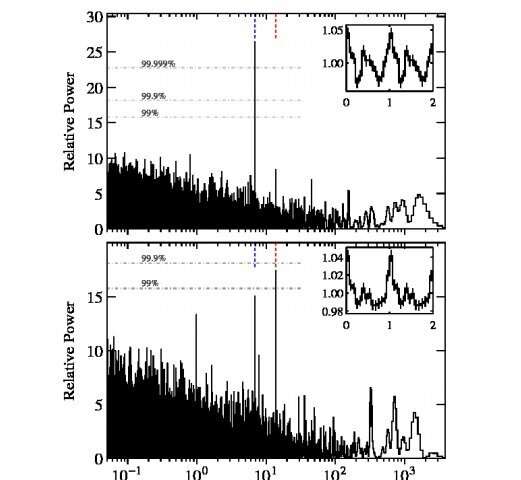September 9, 2019 report
New high-mass gamma-ray binary discovered

An international team of astronomers has detected a new high-mass gamma-ray binary (HMGB) in the Milky Way galaxy. The newly found HMGB, designated 4FGL J1405.1-6119, is one of only a handful of such objects discovered to date. The discovery was announced in a paper published August 28 on the arXiv pre-print repository.
HMGBs consist of an OB star in orbit with a compact object. In these systems, interactions between the two objects result in an emission with spectral energy distribution (SED) peaks above 1.0 MeV. They are assumed to be precursors to high-mass X-ray binaries (HMXBs).
HMGBs are very rare objects. Astronomers estimate that there are about 100 still undetected HMGBs residing in our home galaxy. Moreover, many known gamma-ray sources of as-yet unknown nature, could potentially be high-mass gamma-ray binaries.
A group of astronomers led by Robin Corbet of the University of Maryland has recently conducted a search for gamma-ray binaries. They have analyzed the data collected by the Large Area Telescope (LAT) onboard NASA's Fermi gamma-ray space telescope, aiming to find signs of periodic modulation in gamma-ray light curves of various sources. The study, complemented by data from NASA's Swift spacecraft and Australia Telescope Compact Array (ATCA), allowed the researchers to determine that one particular source identified by LAT is an HMGB.
"We report the identification from multi-wavelength observations of the Fermi Large Area Telescope (LAT) source 4FGL J1405.1-6119 (= 3FGL J1405.4-6119) as a high-mass gamma-ray binary," the astronomers wrote in the paper.
The team investigated 4FGL J1405.1-6119 in order to find periodic modulation that could arise from previously unknown binary systems. Their efforts were fruitful, as periodic modulation at 13.7 days was found from this source at gamma-ray, X-ray, and radio wavelengths.
"We have identified 4FGL J1405.1-6119 as a gamma-ray binary with gamma-ray flux modulated on a period near 13.7 days. This periodicity is also seen at X-ray and radio wavelengths," the paper reads.
According to the study, the results indicate that the modulation period is the orbital period of 4FGL J1405.1-6119. The primary star of the system, located some 25,000 light years away, was found to be an O-type star (most likely of spectral type O6.5 III) with a mass between 25 and 35 solar masses. Therefore, the researchers classified the binary as a new HMGB.
The researchers assume that the secondary star in 4FGL J1405.1-6119 is a rapidly rotating neutron star, however, more observations of this system are required to verify this. They noted that gamma-ray emission from this HMGB could be driven by the interaction between the wind from a rapidly rotating neutron star and the wind from the O star companion.
The authors of the study added that 4FGL J1405.1-6119 is so fat the third gamma-ray binary discovered with LAT from periodic modulation of the gamma-ray emission.
More information: R. H. D. Corbet, et al. Discovery of the Galactic High-Mass Gamma-ray Binary 4FGL J1405.1-6119, arXiv:1908.10764v1 [astro-ph.HE]: arxiv.org/abs/1908.10764
© 2019 Science X Network





















